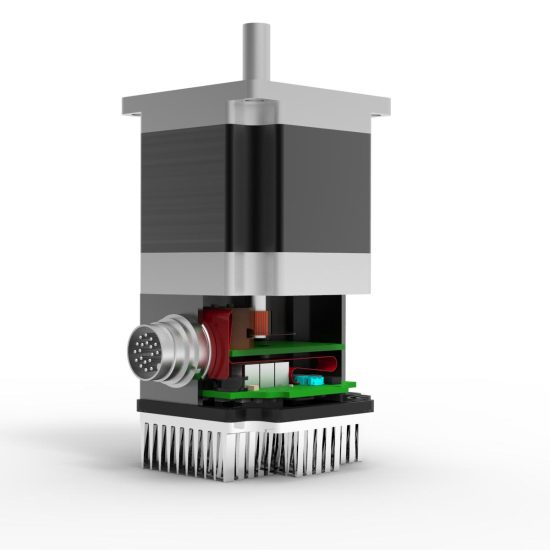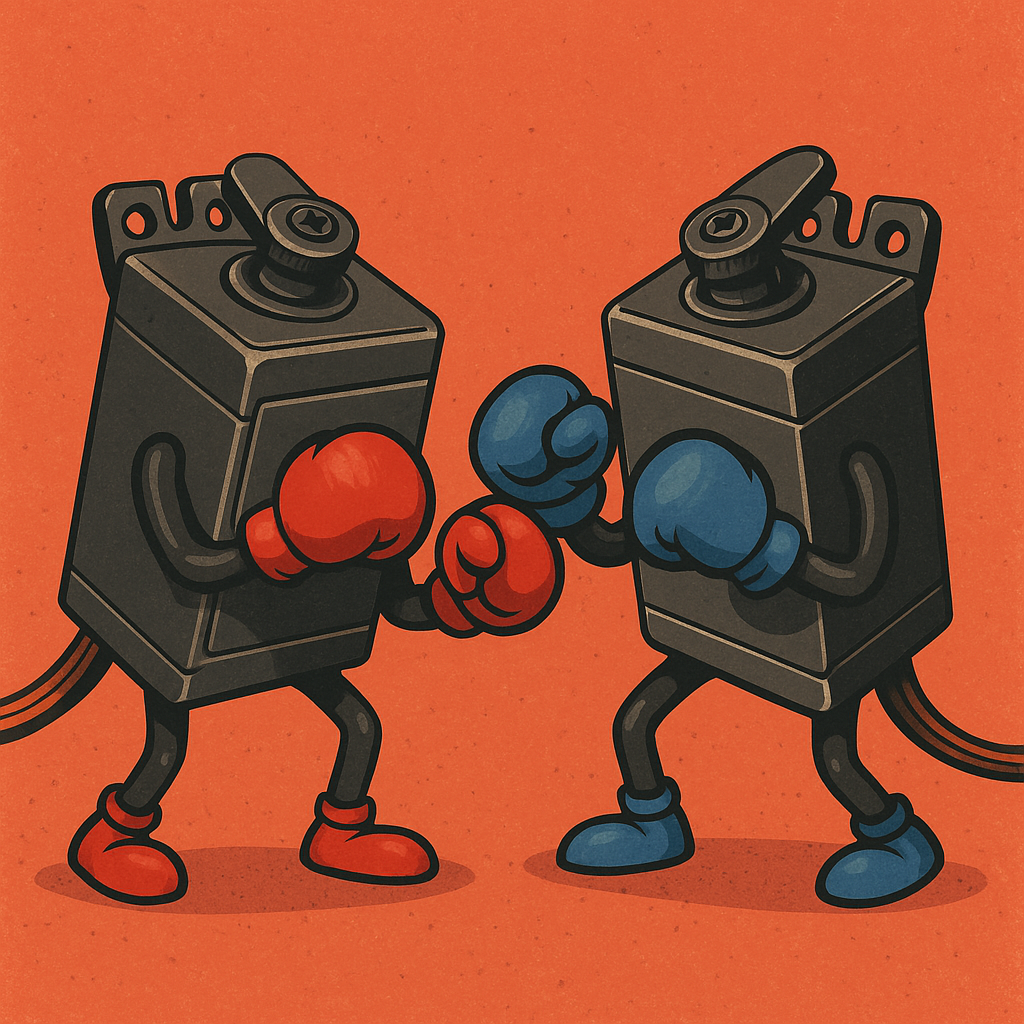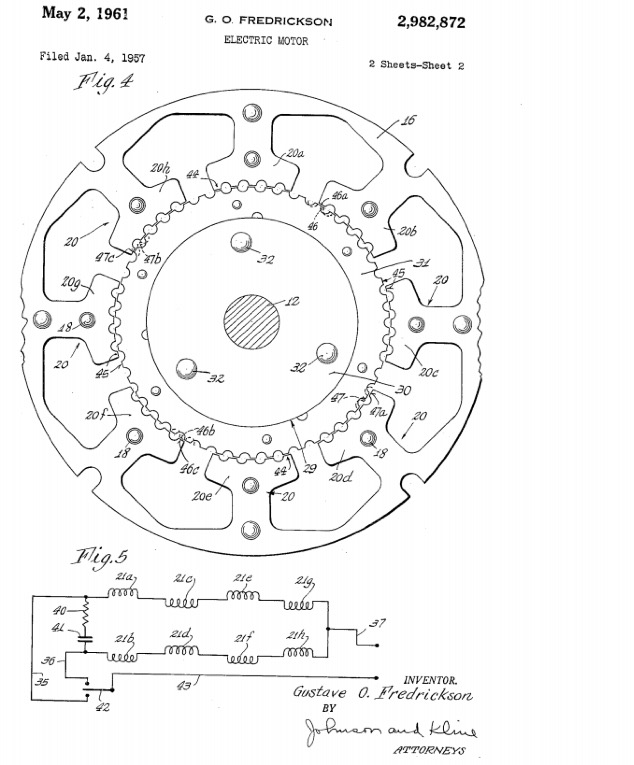Operational Advantages of Integrated Motors

Interesting Projects Blog
April 17 2024 | Donald P. Labriola PE
Combining a motor with its controlling electronics in a single package does more than just eliminate the cost and bulk of the extra wiring – It improves efficiency, reliability, and electromagnetic compatibility! Also, torque curves for the integrated motor system eliminates guesswork. With the indexer, driver, motor and feedback already combined, the rest of system integration is simplified: There are fewer interfaces to be completed by the user, and the high power, RF knowledge intensive interfaces having been eliminated
Motor to Driver optimization is easier in the integrated environment. The specifics of a motor may be easily embedded into the controller. This includes feedback type and resolution, motor characteristics, as well as optimal points for field weakening of Indirect Permanent Magnet motors. Accurate motor modeling parameters used for sophisticated control methods are easily pre-loaded into the controller. The driver capability can be optimized for the motors being driven, saving both the cost of over-design, and some of the losses associated with operating a higher power driver than is needed for the application.
Motor/Driver Efficiency improves, both because of better matching of the driver to the motor, and due to the elimination of additional wiring between the motor and the driver. The long wiring runs add to wasted power directly and indirectly. The direct cause is, of course, due to their I^2R losses. Due to the high frequency content from the PWM drive, the effective resistance is not just the normal DC resistance of the wire; the high frequency components of the current waveforms cause the current to flow mostly near the skin of the wires, making their effective resistance even higher – known as the skin effect. A secondary loss of efficiency of non-integrated systems is due to design considerations to safely operate the switching elements – FETs or IGBTs – in the presence of strong reflected voltage waveforms. When the transmission time from the switches to the load is long compared to the time of the driver switches, it is common for reflections to occur between the driver and the motor. The voltage waveforms will be reflected by the change in impedance between the transmission line – the motor power cable – and the motor and the driver impedances. The resulting reflections can produce voltage peaks as high as two or three times the DC power bus link voltage. Safe driver design requires increasing the voltage rating of the switching elements to handle these higher voltage levels. Higher voltage switches have both higher cost and higher on-resistance (given the same semiconductor footprint). The higher on-resistance of these higher voltage switches contributes to reduced driver efficiency; going to larger footprint devices also adds to cost as well as normally requiring more drive energy to switch these elements.
Motor Insulation Integrity is also improved by eliminating or minimizing the higher voltage spikes which result from line reflections. The insulation build (thickness) typically needs to be significantly increased for PWM driven motors if being driven at significant distances from the driver – that is having connecting cables. In higher voltage drives, the peaks can triple the drive voltage – resulting in spikes high enough to generate corona. The corona damages the motor structure mechanically, degrading the insulation. However, the ozone created by the corona can do more severe and wide spread damage as well. Ozone damages both the insulation and many plastic components within the motor; rubber components including seals may be particularly degraded. Integrating the motor with the controller keeps the wiring from the motor to the driver very short, reducing the propagation time for the signals through these wires to less than the rise and fall times of the drivers. When the signal can reach the load and return to the source in a fraction of the rise time, only that fraction of the voltage change is effectively reflected, keeping the resulting spikes from reflections to a few percent of the switching voltage rather than 300%. This directly tackles the corona problem by significantly reducing the peak spike voltage present.
Electrical Noise Emission and Susceptibility is also significantly improved by eliminating the long runs between the driver and the motor, and between the feedback and the controller. Long wires make great antennas unless they are carefully filtered and shielded. Eliminating the antennas by keeping the lengths short and the loop areas small reduces both E-field and H-field emissions. Similarly, the encoder or resolver signals are easier to keep clean if they are not running through long runs, especially not in long runs alongside PWM driven motor signals! Often, without these “antennas”, the degree of filtering on the driver side can also be significantly reduced, saving bulk and cost, and generally improving efficiency.
Ease of Integration and Startup is enhanced with integrated motor and controllers. With reduced electrical noise, and reduced wiring, and with the controller already cognizant of the motor requirements and feedback configuration, the setup is simplified. Torque – Speed curves reflect the whole package, and there is less misunderstanding than when combining multiple devices (including cabling). The power input and communications signals are usually much easier to deal with for the typical integrator than the intricacies of controlling cable reflections, proper shielding and grounding, and the proper use of ferrite beads to break AC ground loops.
Non-Integrated solutions may still have some advantages when significant IO and communications wiring must be brought out to each axis, but the improvement of communications busses and standards is reducing the advantage that once favored a compact control panel with motors far from their control. This was particularly true of separate drivers and controllers, where the wire run from the controller to the driver is often more sensitive to noise. The non-integrated configurations may also be needed for special motors, very harsh environments (i.e. radiation), or where very small motors are in use.
Integrated Motor/Controllers/Drivers can significantly simplify the design and integration process of many systems, while improving efficiency, Electro-Magnetic Compatibility, and packaging size, while improving reliability to boot!
LINE REFLECTIONS:
With typical insulation, the signal propagates at approximately 0.6 times the speed of light – some 20cm/nanosecond. A 10cm typical internal wiring would allow the signal to reflect back to the source in approximately 1 ns. If the switch has a 25nS rise time, only about 4% of the total voltage amplitude would have changed in the reflection period, thus the reflection is held to approximately 4% of the buss voltage. An external cable of length 2.5m or longer – common in non-integrated configurations – would allow the full reflection of the drive pulse if impedance matching terminations are not used
Related Posts

Integrated Hybrid Servo Motors Vs Standard Integrated Servo Motors
Integrated Hybrid Servo Motors Vs Standard Integrated Servo Motors Interesting Projects Blog April 10 2025 | Donald P. Labriola PE

The Hybrid Servo Motor – Stepping up to Closed Loop
The Hybrid Servo Motor – Stepping up to Closed Loop Interesting Projects Blog October 1 2024 | Donald P. Labriola
